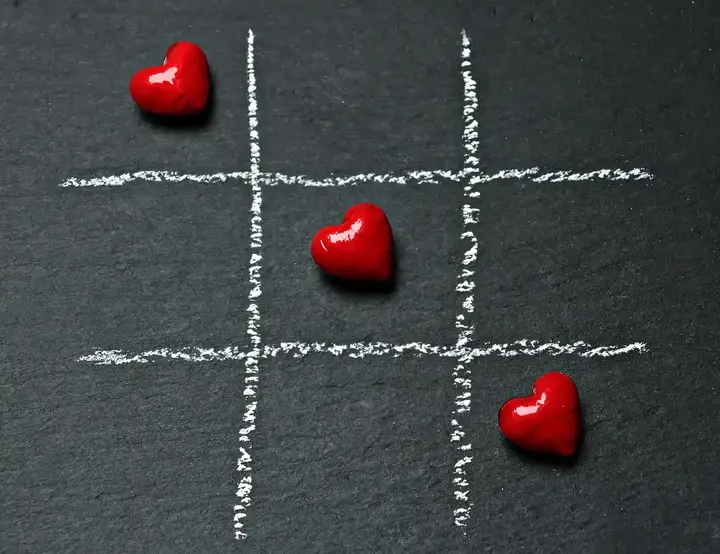Attraction: Do opposites really attract or do similarities govern?

Everyday sayings about love often tell us that opposites attract. Whether the tips come from movies or famous quotes, they all suggest that people who are different from each other are the ones who interest each other the most. However, whenever you keep an eye on your relationships and your life partners, you'll find that they share a lot of things you like, dislike, favorite things, and opinions on controversial topics, ranging from ice cream flavors to moral values.
Show key points
- Contrary to the popular saying "opposites attract," research consistently shows that people are more drawn to those who are similar to them.
- Aristotle and later psychologists, such as Sir Francis Galton and Theodore Newcomb, emphasized that similarity forms the foundation of friendships and platonic attraction.
- Newcomb's controlled studies provided strong causal evidence that people with similar beliefs and attitudes tend to like each other more over time.
- ADVERTISEMENT
- While theories of attraction based on complementarity were proposed in the mid-20th century, they did not hold up under scientific scrutiny.
- The similarity-attraction effect suggests that even seemingly minor commonalities, like ice cream preferences or zodiac signs, can increase interpersonal liking.
- This effect applies broadly across genders, cultures, age groups, and personality types, underscoring the universal strength of similarity in forming connections.
- Implicit self-preference can make us more attracted to people who share trivial traits with us, reinforcing that similarity—even when subtle—boosts platonic attraction.
Is it the difference that matters to us or the similarity? Please note that this article only takes into account the mental attraction we feel towards the person, i.e. how close and comfortable you feel towards them in a platonic way. The article does not take into account sexual attraction; factors such as appearance and the effect of smell on attractiveness are not taken into account.
Recommend
Early views on attraction

In 330 BC, Aristotle wrote about friendship, explaining that similarity is the basis of our relationships. The scientific evidence for this view comes from the similarity hypothesis, proposed by Sir Francis Galton (1952), where he obtained data on married couples and found that the couple is similar in many respects.
Subsequent studies on attraction have indicated that this trend is also reflected in friendships. People with higher degrees of similarity expressed stronger feelings of "admiration" towards each other. These studies were of a correlational nature, and the researchers reported that there is only a relationship between similarity and attraction, as it does not indicate whether similarity causes attraction. The data found by Galton could indicate either that similarities lead to admiration, or that admiration requires similarity.
The evidence that similarity is the basis of attraction was presented in 1956 by Theodore Newcomb, a highly respected social psychologist. His experiment measured the attitudes of new students towards various issues, such as family, religion, public affairs, and race relations. The survey was conducted before they met other students transferring from other universities, to make sure the students did not know each other. The students then indicated their admiration for each other on a weekly basis.
When Newcomb evaluated students at the end of the semester, he found that the more similar students were in the situations they carry, the more they ended up liking each other. This provides a strong causal effect of similarity on gravity. Several other studies have confirmed Newcomb's findings and suggested evidence to confirm the similarity hypothesis. The more similar you are to each other, the more you admire each other!
So, do opposites attract?

This brings us back to the idea of "attraction of opposites." If the research above clearly shows that people with similarities love each other more, is there any evidence of opposites attraction?
You've likely found yourself attracted to someone completely different from you at some point in your life. Countless books and movies show the bad boy falling in love with the school-obsessed girl, or two contradictory people finding love, which seems to indicate that opposites are attracting.
Previous studies conducted from 1960 to 1975 have made hypotheses about tamitamia. These are differences that, when combined, can help make individual parts work together effectively (complement each other), and can form the basis of attraction.
For example, controlling people may be attracted to submissive people, while talkative people may be attracted to quieter people. The idea was that such complementarity/complementarity could be beneficial to both individuals in the relationship, which could form a good basis for attraction.
However, when these ideas were formally and directly tested, studies failed to support the idea that complementarity is the main determinant of attraction. When it comes to our attitudes, values, bad habits, income levels, intellectual ability, personality traits, and even simple things like our favorite ice cream flavor or zodiac, the more people are similar, the more attraction there is. It was similarity that led to attraction.
So, overall, there is very little, if any, evidence that opposites or complements lead to long-term attraction.
This tells us that the evidence that resemblance is required for greater attraction, and that it is the basis for liking someone, is stronger and more consistent. The bigger question is... Why does similarity lead to greater attraction?
This can be explained by the effect of similarity and difference.
The effect of similarity and difference
Studies have revealed that the effect of similarity and difference arises when people respond to interpersonal attraction. What this means is that your attraction to someone is determined by the percentage of similarities you share with them.
Let's say you express your opinions on several topics with someone. You discover that you both have similar views on many of the topics you discussed. This will make you more attracted to him.
We can simply divide the number of topics in which similar views are expressed by the total number of topics discussed to predict the level of attraction towards someone. The more similar, the more you like this person.
It is important to note that the effect of similarity on gravity is very strong. This applies to many topics you discuss with someone, no matter how trivial and intuitive they are. This effect also applies equally to males and females, and applies to everyone, regardless of their age, culture or educational differences.
Other cases where the effect of similarity and difference is true are when it comes to religious beliefs, self-concept, being a morning or evening person, and even considering the same kind of joke funny!
Do even trivial and intuitive similarities generate gravity?

Sharing even trivial similarities — such as having the same first letter in your name as someone else, sharing the same zodiac signs, or having the same date of birth — can all make you find the other person more attractive.
This is caused by an effect known as implicit selfishness.
This means that the positive feelings you feel about yourself, such as how you feel positive about your name or horoscope, can have an indirect excess cumulative effect. This indirect effect can increase your attraction to the person with whom you share these trivial similarities. Therefore, positive attachments to something related to yourself can increase your affection for others who share the same qualities or characteristics! These findings also confirm the basic principle of social life, namely that similarity is the basis of attraction. The effects of similarity are very strong and can occur unintentionally, but there is no way to avoid them!








